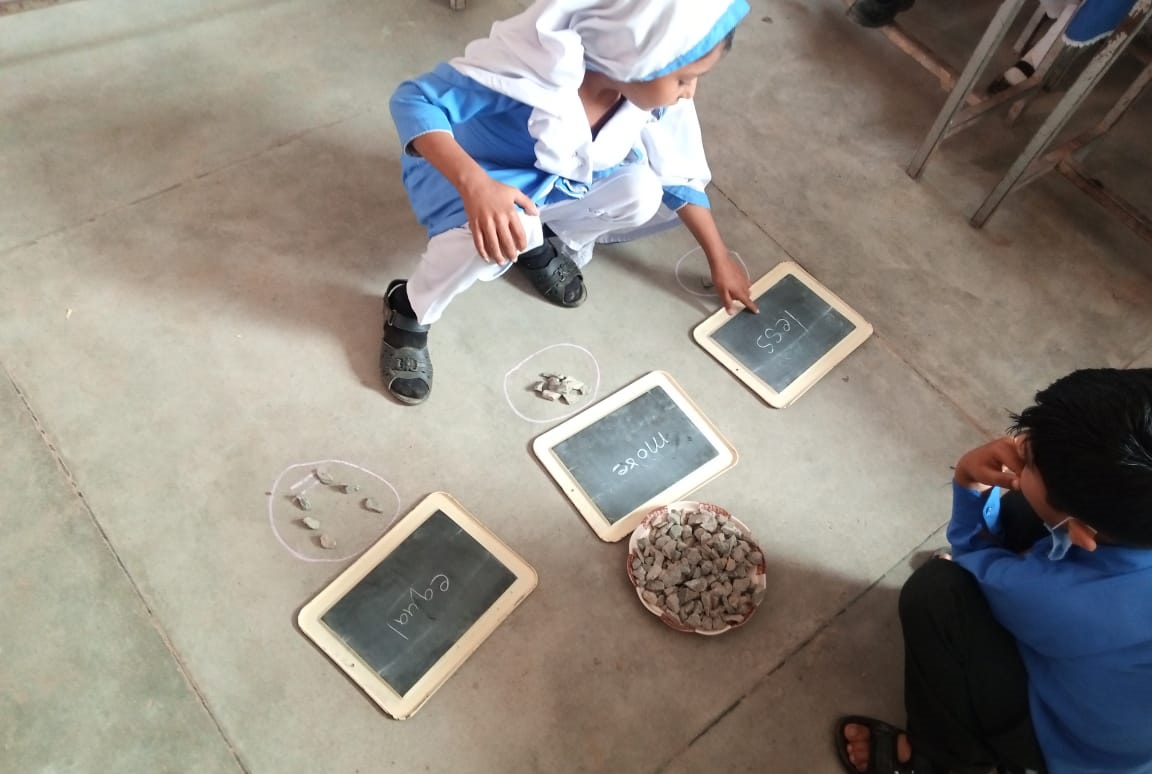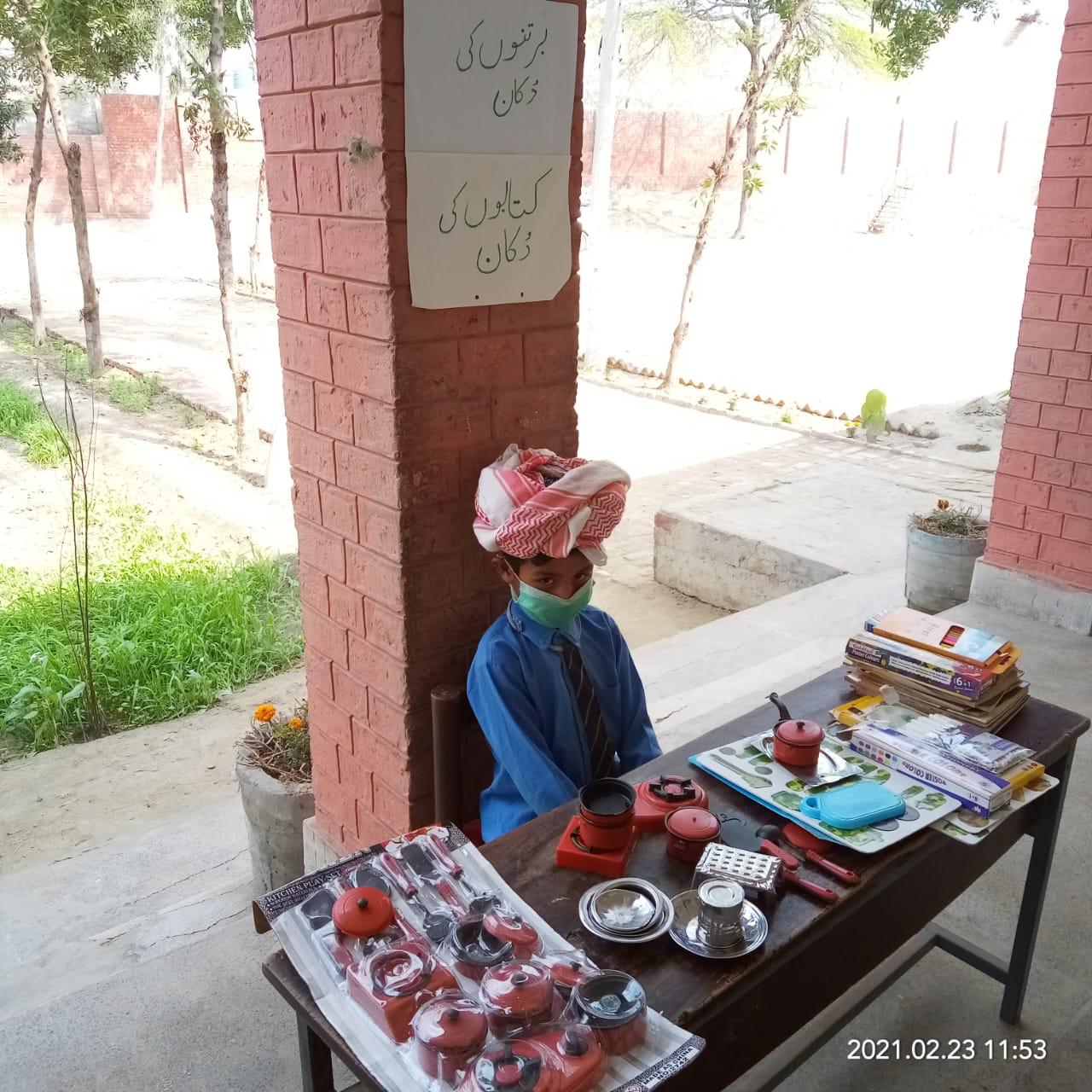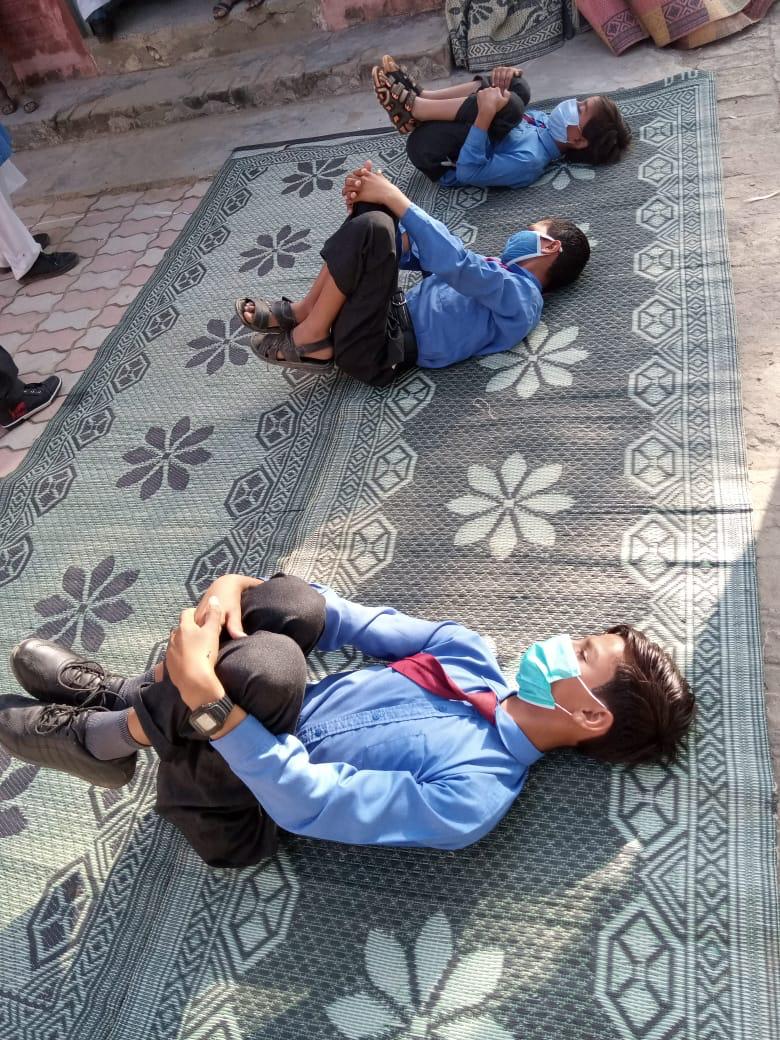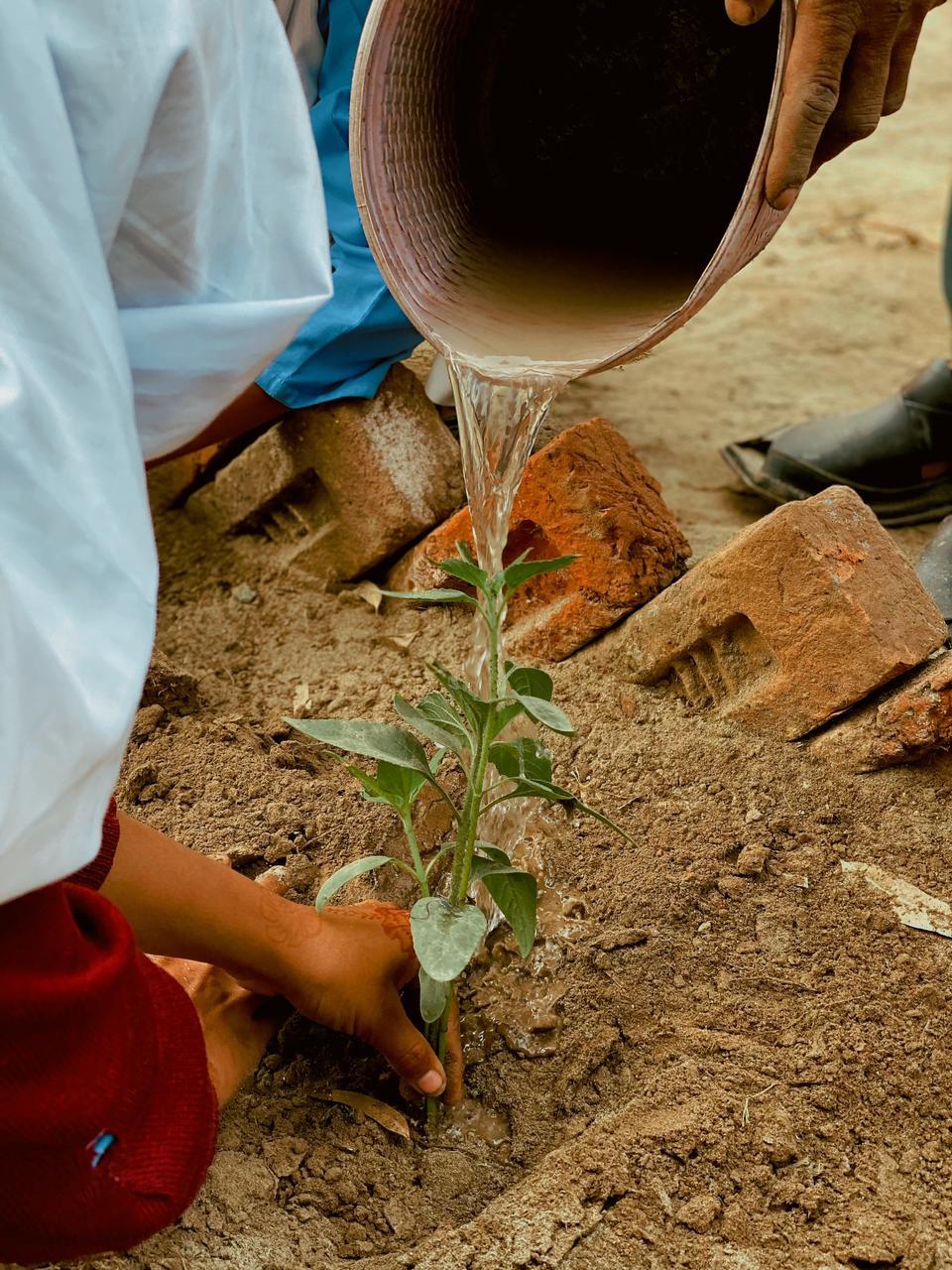The Complexities and Challenges of Designing Play & Joy Based Learner-Centered Curricular Materials for Low Resource Contexts
Pakistani Classrooms in the Macrocosm: The World-as-is is what ought to be?
Here’s what we have been seeing in public schools across Pakistan from their inception: instruction is centered on the teacher; rote learning and drilling are the main pedagogical strategies in classrooms; social emotional learning is routinely sacrificed, while teaching-to-the-test is prioritized; the content and skills taught within classrooms are divorced from the child’s reality, and the purpose of learning remains limited to transmission from teacher to student, rather than the co-creation of meaning. In the absence of the requisite skills, means, and capacities to bring teaching and learning into the 21st century, it is no surprise that public schools across Pakistan have stayed the same. The question posed to me by a primary school teacher at a rural public school in Talagang: “We want to design learner-centered plans, but how are we supposed to do that without access to technology/internet, or without the necessary resources and materials available in our school?” stands an example of the constraints and resulting dilemmas that Pakistani teachers face every day.
Contextual Realities in the Microcosm
I have been working with Public-Private Partnership (PPP) Schools in Punjab and Sindh to revamp the learner’s experience within the classroom. The aforementioned reality informs the Instructional Design Strategy that I have created for our PPP Schools, with the central guiding principles being teacher and student wellbeing, learning by doing, and re-sparking joy, stability, and hope in students’ lives (especially as they come back to school post-lockdown). In addition to the identified realities, our PPP schools are also constrained by the curricular demands imposed by government partners, as well as the on-ground challenges regarding the quality of lesson planning.
Finding Strategic Pathways
 Responding to these challenges, my team and I decided to work on the creation of Teacher Guides (TGs) – a collection of scripted learner-centered lesson plans that focus on literacy and numeracy, higher-order thinking, play- and activity-based learning, joy, and child wellbeing with the aims of improving the quality of teaching and learning and building teacher capacity.
Responding to these challenges, my team and I decided to work on the creation of Teacher Guides (TGs) – a collection of scripted learner-centered lesson plans that focus on literacy and numeracy, higher-order thinking, play- and activity-based learning, joy, and child wellbeing with the aims of improving the quality of teaching and learning and building teacher capacity.
While designing these TGs, one of the biggest challenges that we continue to face is working in a low resource context that is constrained by the digital divide, infrastructural issues (including a lack of proper classrooms or spaces for the learners to sit), and a dearth of teaching and learning resources within the classroom. So, we decided to turn to online resources only to find ourselves faced with the question of how to adapt the phenomenal breadth of activities and resources available online to create curricular materials that fulfilled our goals of transforming these classrooms while working within our contextual constraints?
Mapping the Strategic Pathway
 What we did first was to keep the child at the heart of all of our lesson plans: their interests, prior knowledge, and experiences are the points of departure for all teaching and learning activities that take place within the classroom. In other words, we begin by eliciting and validating what learners already know or have experienced in their lives, and then build new content knowledge and skills from there. For example, we begin our unit on the importance of keeping oneself clean by asking students if they have ever fallen ill or had to go to the doctor, how they felt when they were ill, what causes us to fall ill, and what can we do to stay healthy. The teacher, then, summarizes student responses and introduces new content, linking everything back to students’ lived experiences. This approach is in stark contrast with the norm whereby a teacher enters the class, announces the topic, and begins delivering a lecture. This has allowed us to reframe the classroom power dynamic and signal to both the learners and teachers that students are not empty vessels, merely waiting to passively receive knowledge, but that their knowledge and experiences should be given voice to, valued, and made a part of the process of co-creation of meaning and understanding.
What we did first was to keep the child at the heart of all of our lesson plans: their interests, prior knowledge, and experiences are the points of departure for all teaching and learning activities that take place within the classroom. In other words, we begin by eliciting and validating what learners already know or have experienced in their lives, and then build new content knowledge and skills from there. For example, we begin our unit on the importance of keeping oneself clean by asking students if they have ever fallen ill or had to go to the doctor, how they felt when they were ill, what causes us to fall ill, and what can we do to stay healthy. The teacher, then, summarizes student responses and introduces new content, linking everything back to students’ lived experiences. This approach is in stark contrast with the norm whereby a teacher enters the class, announces the topic, and begins delivering a lecture. This has allowed us to reframe the classroom power dynamic and signal to both the learners and teachers that students are not empty vessels, merely waiting to passively receive knowledge, but that their knowledge and experiences should be given voice to, valued, and made a part of the process of co-creation of meaning and understanding.
 Second, we used the Understanding by Design Framework’s Essential Questions (EQs) as the cornerstones of our curriculum, to stimulate thought and create a culture of student-led inquiry in the classroom that goes beyond textbook-based and teacher-centered learning. In our classrooms, EQs are used to convey learning objectives at the beginning of the unit, frame discussions during the unit, and synthesize learning at the end of the unit, thus, making learning more meaningful, deeper, and long-lasting. Examples of EQs that we used in our curriculum include: How would our world be different if there were no plants? Why do we need numbers?
Second, we used the Understanding by Design Framework’s Essential Questions (EQs) as the cornerstones of our curriculum, to stimulate thought and create a culture of student-led inquiry in the classroom that goes beyond textbook-based and teacher-centered learning. In our classrooms, EQs are used to convey learning objectives at the beginning of the unit, frame discussions during the unit, and synthesize learning at the end of the unit, thus, making learning more meaningful, deeper, and long-lasting. Examples of EQs that we used in our curriculum include: How would our world be different if there were no plants? Why do we need numbers?
Third, our curricular content is created using principles of backward design (clarifying both the desired results and the process of assessing or gathering evidence of whether they have been achieved or not, prior to writing down a lesson plan), which results in coherence amongst the learning objectives, assessment opportunities, and the teaching and learning experiences. The ensuing lesson plans are predicated on the understanding that children learn through play, active involvement, engagement, and exploration. In order to create and curate meaningful learning experiences for children using little- to no resources, we had to constantly innovate.
 Such innovations included using students’ own bodies as a resource in movement-based activities e.g. when learning the alphabet. We did associated yoga poses like R for Rabbit Pose and T for Tree Pose, or when learning about numbers, students practiced counting while doing cross-body movements (crossing our body’s midline activates both brain hemispheres which enhances retention of information and learning). We also repurposed resources from the environment as learning materials, e.g. counting is practiced using pebbles, leaves, buttons. Moreover, we used a lot of pretend play and role play activities that build on student’s imaginations and allow them to transcend the limitations of their physical environment. For instance, students play a game called Emotion Charades where they act out an emotion and others guess its name.
Such innovations included using students’ own bodies as a resource in movement-based activities e.g. when learning the alphabet. We did associated yoga poses like R for Rabbit Pose and T for Tree Pose, or when learning about numbers, students practiced counting while doing cross-body movements (crossing our body’s midline activates both brain hemispheres which enhances retention of information and learning). We also repurposed resources from the environment as learning materials, e.g. counting is practiced using pebbles, leaves, buttons. Moreover, we used a lot of pretend play and role play activities that build on student’s imaginations and allow them to transcend the limitations of their physical environment. For instance, students play a game called Emotion Charades where they act out an emotion and others guess its name.
Fourth, using research on children’s daily attention rhythmicity and attention spans, we also decided to include Brain Breaks at strategic points in our lessons. Movement-based brain breaks not only re-energize students, but also allow us to build in moments of physical wellbeing throughout the day. Mindfulness and meditation brain breaks are added to ensure that students are given the due time to process their emotions, work on their self-regulation skills, and improve their overall emotional and mental wellbeing.
 Lastly, we provided several opportunities for creating connections: between students, across the curriculum, and between the child’s reality and what s/he is learning at school. Including both collaborative and independent work within the classroom ensures that students learn from each other, hone the crucial skill of collaboration, foster a sense of community and connectedness, and also create their own meaning about concepts. For example, students collaboratively play games such as Pictionary, Taboo, and Scavenger Hunt to review concepts. Activities based on play, imagination, dramatization, and learning by doing are aimed at sparking joy and connecting learning in school with the learner’s natural development process and lived experiences. For instance, learners become ‘Sense Detectives’ at different sense stations to observe and explore various materials through their senses (e.g. for the hearing station, we make different shakers using recyclable boxes with rice, buttons, coins, sand inside them). We also revamped traditional written homework into home-school connection activities that allow deeper and more authentic partnerships between the home and school life (e.g. while learning how to read time, learners are asked to lead discussions at home about the importance of valuing time and how we use calendars/clocks in our daily lives).
Lastly, we provided several opportunities for creating connections: between students, across the curriculum, and between the child’s reality and what s/he is learning at school. Including both collaborative and independent work within the classroom ensures that students learn from each other, hone the crucial skill of collaboration, foster a sense of community and connectedness, and also create their own meaning about concepts. For example, students collaboratively play games such as Pictionary, Taboo, and Scavenger Hunt to review concepts. Activities based on play, imagination, dramatization, and learning by doing are aimed at sparking joy and connecting learning in school with the learner’s natural development process and lived experiences. For instance, learners become ‘Sense Detectives’ at different sense stations to observe and explore various materials through their senses (e.g. for the hearing station, we make different shakers using recyclable boxes with rice, buttons, coins, sand inside them). We also revamped traditional written homework into home-school connection activities that allow deeper and more authentic partnerships between the home and school life (e.g. while learning how to read time, learners are asked to lead discussions at home about the importance of valuing time and how we use calendars/clocks in our daily lives).
Our Vision
Through this intervention, and our whole-child development approach, our aspiration is to transform the adopted schools into nurturing spaces where joy, connection, and authentic learning are privileged so that no child is left behind.
About the Author
Neha is a Fulbright scholar and has a Master’s in Education, Culture, and Society from the University of Pennsylvania. She is currently working at The Citizens Foundation (TCF), where she leads curriculum and assessment design for Public-Private Partnership schools. She tweets at @NehaRaheel.


